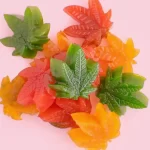Terpenes, the aromatic compounds found in a variety of plants, are an integral part of the sensory experience we associate with nature. From the sweet scent of citrus to the earthy aroma of pine, terpenes not only give plants their distinct fragrances but also play a significant role in shaping our understanding of flavor, wellness, and even mood. In recent years, the world of flavored terpenes has seen a surge in popularity, primarily due to their use in culinary arts, aromatherapy, and even cannabis culture. But what exactly are flavored terpenes, and how are they shaping our sensory experiences? Let’s dive in.
What Are Terpenes?
Terpenes are a large and diverse class of organic compounds produced by various plants, including trees, herbs, and flowers. They are primarily used by plants to defend against predators, attract pollinators, and facilitate plant reproduction. In essence, these compounds are nature’s scent molecules.
In addition to their protective roles, terpenes have distinct and identifiable smells that humans have long used in perfumes, essential oils, and now, increasingly in food, beverages, and even wellness products. The fragrance of lavender, the zest of citrus, or the earthy aroma of cannabis—all of these characteristics are attributed to specific terpenes.
The Role of Terpenes in Flavor
Terpenes contribute significantly to the flavor profiles of food and beverages. While traditional flavoring often relies on sugar, salt, or artificial additives, terpenes offer a more natural way to enhance taste. For example, the zest of a lemon can be traced back to a terpene called limonene, which imparts that refreshing citrus flavor and aroma.
Terpenes do more than just create aromas; they actively influence taste. They can provide depth, complexity, and balance to a flavor experience, adding subtle notes of bitterness, sweetness, or spice, depending on the terpene used. This has led to a growing interest in flavored terpenes, particularly in the culinary world and beverage industry.
Popular Flavored Terpenes and Their Uses
Flavored terpenes have found their way into a variety of industries. Let’s take a closer look at some of the most common terpenes and their unique properties:
Limonene – Citrus and Sweet
Limonene is perhaps one of the most well-known terpenes, commonly associated with the fresh, tangy scent of citrus fruits like lemons, oranges, and grapefruits. This terpene is not only found in fruit rinds but also in many cleaning products due to its refreshing aroma. In culinary uses, limonene imparts a bright, uplifting citrus flavor. It’s used in various food products, including drinks, candies, and even baked goods.
Limonene is also popular in the wellness industry for its potential mood-enhancing properties, believed to promote feelings of happiness and relief from stress and anxiety.
Pinene – Piney and Fresh
Pinene is another well-known terpene, with a distinct smell that evokes the forest—think fresh pine trees or rosemary. This terpene is known for its crisp, woodsy aroma and is commonly used in both food flavorings and essential oils. Pinene has been associated with improved respiratory function, which is why it’s often used in wellness products like inhalers and diffusers.
When it comes to flavor, pinene can lend an earthy, fresh note to a dish, making it a great addition to savory foods, herbal teas, and even certain desserts that aim to highlight natural, plant-based ingredients.
Linalool – Floral and Relaxing
Linalool is a terpene with a soft floral scent commonly found in lavender, mint, and coriander. Its pleasant aroma and calming properties make it popular in both aromatherapy and the culinary world. Linalool is often used in soothing teas, baked goods, and savory dishes to impart a subtle floral taste.
Aside from its flavor contributions, linalool is renowned for its potential therapeutic benefits, including its ability to reduce stress and promote relaxation, making it a key component in wellness products designed to help with sleep and anxiety.
Myrcene – Earthy and Musky
Myrcene is one of the most abundant terpenes in cannabis and is also found in hops, lemongrass, and mangoes. It has an earthy, musky, and somewhat fruity aroma, often likened to cloves or thyme. In the world of flavored terpenes, myrcene adds a deep, full-bodied note to various food and beverage products, especially those that aim for an herbal or spicy flavor profile.
Myrcene is also recognized for its sedative properties, which can enhance relaxation and promote a sense of calm, making it a frequent addition to teas and wellness products aimed at reducing anxiety or improving sleep.
Terpinolene – Sweet and Herbaceous
Terpinolene is a more delicate and complex terpene, often described as sweet, floral, and slightly herbal. Found in a variety of plants such as tea tree, lilac, and nutmeg, terpinolene can add a nuanced sweetness to foods and beverages. It’s commonly used in both perfumes and flavored products for its light, refreshing aroma.
In addition to its pleasant flavor, terpinolene has been noted for its antimicrobial and antioxidant properties, making it an appealing choice for wellness applications as well.
The Rise of Terpene-Infused Products
As consumers continue to seek more natural and functional ingredients, the demand for terpene-infused products has risen. In the food and beverage industries, manufacturers are increasingly incorporating terpenes into everything from craft beers to gourmet chocolates and even cannabis-infused edibles.
Moreover, as the cannabis industry continues to grow, terpenes are being marketed as a key element in enhancing the flavor and effects of different strains. Cannabis enthusiasts often seek out specific terpene profiles to customize their experiences, as terpenes can influence not only taste but also the overall effects of the plant, such as relaxation, energy, or focus.
In addition to food and cannabis, terpenes are gaining popularity in personal care and wellness products. From scented candles to skincare products and essential oils, terpenes are being infused to create more natural and therapeutic experiences.
The Future of Flavored Terpenes
As the interest in flavored terpenes continues to grow, the possibilities seem endless. With ongoing research into the health benefits and sensory impacts of terpenes, we may see even more applications across various industries, including pharmaceuticals, wellness, and beyond.
In the food and beverage space, flavored terpenes offer a natural and innovative way to create distinctive, high-quality products that tap into both flavor and fragrance. As consumers become more conscious about the ingredients in their food, terpenes could provide a way to add complexity and richness without relying on artificial flavorings or additives.
Ultimately, the versatility of terpenes offers something for everyone, whether you’re a foodie looking for unique flavors, a wellness enthusiast seeking relaxation, or simply someone who appreciates the finer things in life, like the scent of fresh citrus or the earthy aroma of pine.
Conclusion
Flavored terpenes have evolved from a niche interest to a key component in the food, beverage, wellness, and cannabis industries. With their unique ability to enhance flavor, fragrance, and even influence mood, terpenes are revolutionizing the way we think about both taste and wellness. As research into these aromatic compounds continues, the potential for new and exciting applications is limitless, making terpenes a truly fascinating subject in the world of flavor and fragrance.
Medical Disclaimer:
The information provided in these blog posts is intended for general informational and educational purposes only. It is not a substitute for professional medical advice, diagnosis, or treatment. Always seek the advice of your physician or other qualified healthcare provider with any questions you may have regarding a medical condition. The use of any information provided in these blog posts is solely at your own risk. The authors and the website do not recommend or endorse any specific products, treatments, or procedures mentioned. Reliance on any information in these blog posts is solely at your own discretion.
















